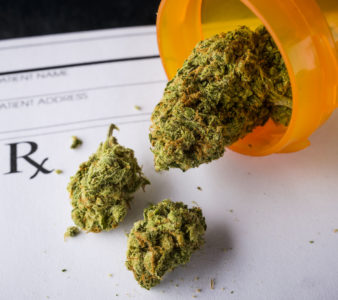 Medical marijuana has been a hot topic on this blog and in the national news. Minnesota currently allows individuals to apply for a medical marijuana license if they meet a certain number of health characteristics set forth by the state. We’ve made our position about medical marijuana known on several occasions, but we’ll refresh it here briefly if you didn’t check out those other blogs.
Medical marijuana has been a hot topic on this blog and in the national news. Minnesota currently allows individuals to apply for a medical marijuana license if they meet a certain number of health characteristics set forth by the state. We’ve made our position about medical marijuana known on several occasions, but we’ll refresh it here briefly if you didn’t check out those other blogs.
We believe the medical marijuana is certainly an avenue worth pursing, but we need to learn more about the compounds inside marijuana before rushing it to the market. It’s certainly shown some promise, but if we want it to be truly effective, we need a better scientific understanding of each individual compound in different strains of marijuana. We should consider putting more money into researching and learning about the medicinal properties of marijuana.
Now, a high profile athlete in Minnesota is speaking out in favor of medicinal marijuana. He may not be championing medical marijuana for chronic pain, but he has seen it work first hand.
Karl Anthony Towns Talks Medical Marijuana
Minnesota Timberwolves star Karl Anthony Towns recently spoke out in favor of removing marijuana from the listed of banned substances for NBA players, agreeing with a sentiment pushed by former NBA commissioner David Stern.
“I agree with David Stern with marijuana,” Towns told ESPN “You could use the [chemical] properties in it to make a lot of people better.”
NBA players deal with pain and discomfort on a regular basis throughout the season, and Towns believes marijuana could help some players deal with that discomfort.
“That’s something that Adam Silver has to do. That’s out of my control, but maybe legalizing marijuana. Not fully legal, where people are chimneys, but using [marijuana] as a beneficial factor as an athlete, as a person living daily.”
Towns has already seen how medical marijuana can be used to help certain individuals. His girlfriend’s nephew is autistic, and a medical dosage has helped the boy and the family with the condition.
“I’ve seen nothing but benefits for him,” Towns said. “And I’m very happy that he finds comfort. He finds that normalcy every day. Just like a father, a mother, a parent with a child, you’d do anything for your child.”
It sounds like Towns is in the same boat. He has seen the benefits of medicinal marijuana in his life, but he understands that simply legalizing it without researching the science behind the drug could lead to unintended consequences. We should be pouring more money into chronic pain research if we really are committed to helping people manage their pain.
 One of the approved conditions for medical marijuana in the state of Minnesota is intractable pain. Intractable pain is pain that can’t easily be tracked to a specific source and treated successfully, and many patients with chronic pain are deemed to have intractable pain. So you’d think the medical marijuana program in Minnesota would be beneficial for chronic pain sufferers? Well, according to a recent article in the Star-Tribune, it’s anything but easy.
One of the approved conditions for medical marijuana in the state of Minnesota is intractable pain. Intractable pain is pain that can’t easily be tracked to a specific source and treated successfully, and many patients with chronic pain are deemed to have intractable pain. So you’d think the medical marijuana program in Minnesota would be beneficial for chronic pain sufferers? Well, according to a recent article in the Star-Tribune, it’s anything but easy.
 We’re still in the early stages of managing how medicinal marijuana is used to treat certain health conditions. However, since the door has been opened, millions of dollars in funding has been given to explore the benefits and drawbacks of medical marijuana for treating specific health ailments.
We’re still in the early stages of managing how medicinal marijuana is used to treat certain health conditions. However, since the door has been opened, millions of dollars in funding has been given to explore the benefits and drawbacks of medical marijuana for treating specific health ailments. 